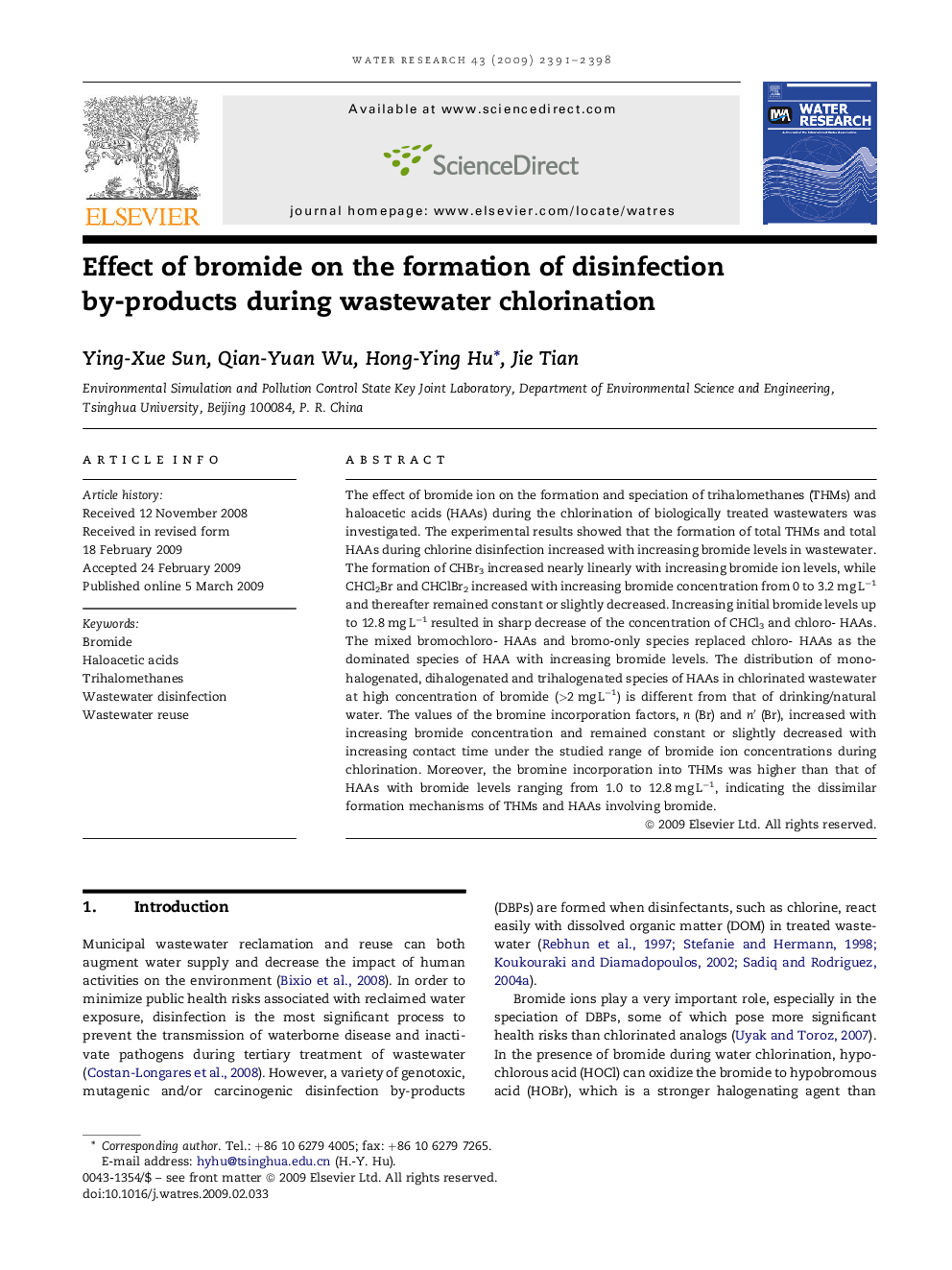| Article ID | Journal | Published Year | Pages | File Type |
|---|---|---|---|---|
| 4484859 | Water Research | 2009 | 8 Pages |
The effect of bromide ion on the formation and speciation of trihalomethanes (THMs) and haloacetic acids (HAAs) during the chlorination of biologically treated wastewaters was investigated. The experimental results showed that the formation of total THMs and total HAAs during chlorine disinfection increased with increasing bromide levels in wastewater. The formation of CHBr3 increased nearly linearly with increasing bromide ion levels, while CHCl2Br and CHClBr2 increased with increasing bromide concentration from 0 to 3.2 mg L−1 and thereafter remained constant or slightly decreased. Increasing initial bromide levels up to 12.8 mg L−1 resulted in sharp decrease of the concentration of CHCl3 and chloro- HAAs. The mixed bromochloro- HAAs and bromo-only species replaced chloro- HAAs as the dominated species of HAA with increasing bromide levels. The distribution of monohalogenated, dihalogenated and trihalogenated species of HAAs in chlorinated wastewater at high concentration of bromide (>2 mg L−1) is different from that of drinking/natural water. The values of the bromine incorporation factors, n (Br) and n′ (Br), increased with increasing bromide concentration and remained constant or slightly decreased with increasing contact time under the studied range of bromide ion concentrations during chlorination. Moreover, the bromine incorporation into THMs was higher than that of HAAs with bromide levels ranging from 1.0 to 12.8 mg L−1, indicating the dissimilar formation mechanisms of THMs and HAAs involving bromide.
